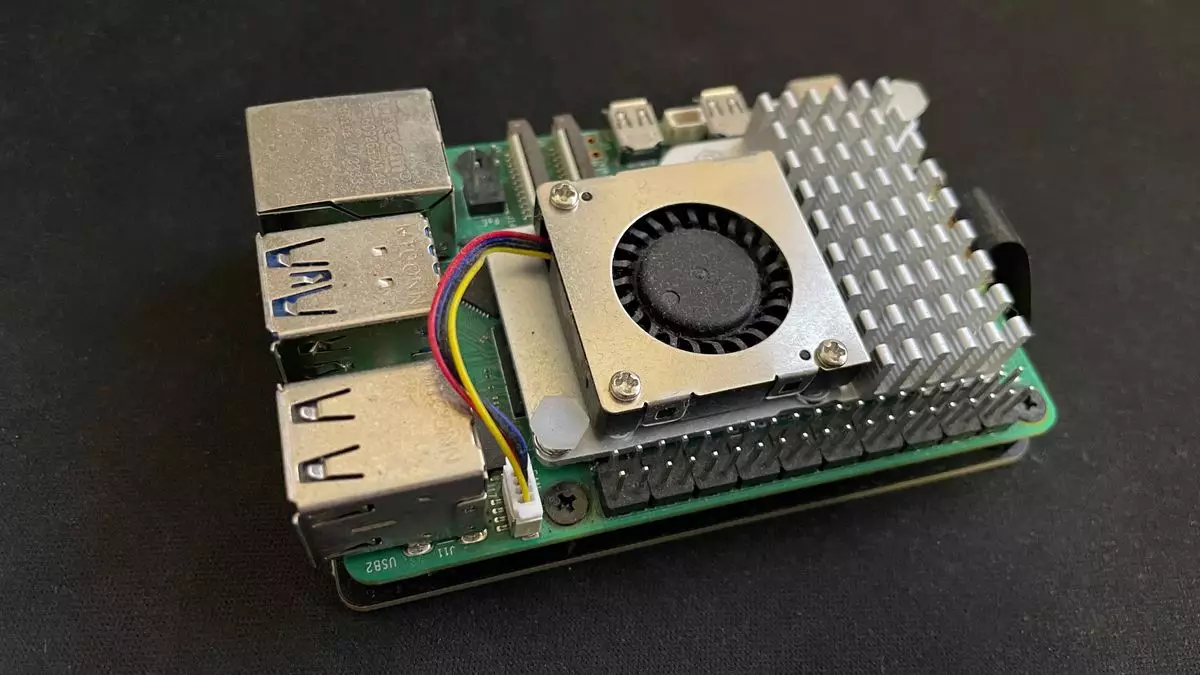The launch of the Raspberry Pi 5 in 2023 marked a significant upgrade in the capabilities of single-board computers (SBCs). Notably, one of its groundbreaking features was the support for PCIe drives, paving the way for users to transform it into a competent desktop setup. Though the initial release lacked official SSD solutions, recent announcements from Raspberry Pi Ltd have introduced official SSD kits, enhancing the computing experience for enthusiasts.
The Raspberry Pi 5 has made strides toward becoming a viable desktop alternative, a marked departure from its predecessors. The inclusion of the PCIe interface opens numerous avenues for connectivity and performance improvements. While early adopters had to rely on third-party products, such as the Pimoroni NVMe Base combined with compatible SSDs like the Crucial P3, the recent official offerings allow users to enjoy an integrated experience.
The initial excitement surrounding PCIe support was tempered by the absence of a built-in M.2 connector on the board itself. Meanwhile, the introduction of the Hardware Attached on Top (HAT) format provides a neat solution, allowing users to leverage ribbon cables to connect various PCIe devices. This flexibility is pivotal as it aligns with the Raspberry Pi ethos of creativity and modularity.
Performance is at the core of the Raspberry Pi 5’s appeal. The substantial upgrades over its predecessor—the Raspberry Pi 4—ensure that most everyday computing tasks run smoothly. This includes, surprisingly, the ability to handle certain gaming scenarios. Although the experience cannot rival conventional gaming PCs, the capability to run graphic-intensive applications, such as Doom 3, indicates that the Pi 5 is not just a toy for coding anymore; it’s a legitimate contender in the mini PC space.
The significant bottleneck in using the Pi 5 for heavy-duty tasks lay in the reliance on MicroSD cards for storage. These cards, although fast by common standards, still fall short in terms of data stability and load times necessary for gaming and intensive applications. Transitioning to an SSD setup significantly mitigates these drawbacks, offering a much quicker and more reliable data transfer experience.
While embracing the new technology, users would find that the journey toward optimal performance does not come without its costs. For those looking to enhance their Raspberry Pi 5 with SSDs, initial investments could be steep. The freshly launched official SSDs are priced at reasonable levels—$30 for a 256GB drive and $45 for a 512GB drive—but adding the necessary HAT increases the overall expenditure. This presents a dilemma where budget-conscious users must weigh the upgrade potential against financial limitations.
Nevertheless, the return on investment for serious users looking to incorporate SSDs into their setup can be notable. The official SSD offerings boast impressive performance metrics, with up to 70k IOPS, making them not just storage solutions but integral components that elevate the Raspberry Pi 5 experience.
An exciting aspect of the Raspberry Pi 5 is the potential for overclocking, especially regarding PCIe functionality. While it officially supports PCIe 2.0, users can easily unlock PCIe 3.0 speeds through a simple tweak in the config file. By adding “dtparam=pciex1_gen=3,” enthusiasts can boost performance further, enhancing overall system responsiveness and efficiency for gaming and multitasking.
This type of customization is a hallmark of the Raspberry Pi community, encouraging users to experiment and push the limits of their hardware. Coupled with the newly available SSD solutions, the Pi 5 becomes an exhilarating platform for users to test and refine their technical skills.
While gaming is undoubtedly one of the most exciting prospects of this hardware, the versatility of the Raspberry Pi 5 extends far beyond that. Developers can harness its power for retro gaming setups using platforms like RetroPie or Recalbox, capitalizing on its capacity to handle a variety of gaming genres at respectable performance levels.
Furthermore, the potential for creative projects, such as home entertainment systems or lightweight web servers, further demonstrates the flexibility of this tiny computer. The recent announcements by Raspberry Pi Ltd regarding official SSD offerings give users the tools they need to maximize the utility of the Raspberry Pi 5.
The Raspberry Pi 5 has truly evolved into a tool capable of considerable desktop-like performance while maintaining its identity as a versatile and cost-effective option for hobbyists and developers alike. The introduction of official SSD solutions only enhances its appeal, allowing users to explore a myriad of applications, from gaming to multimedia projects.

